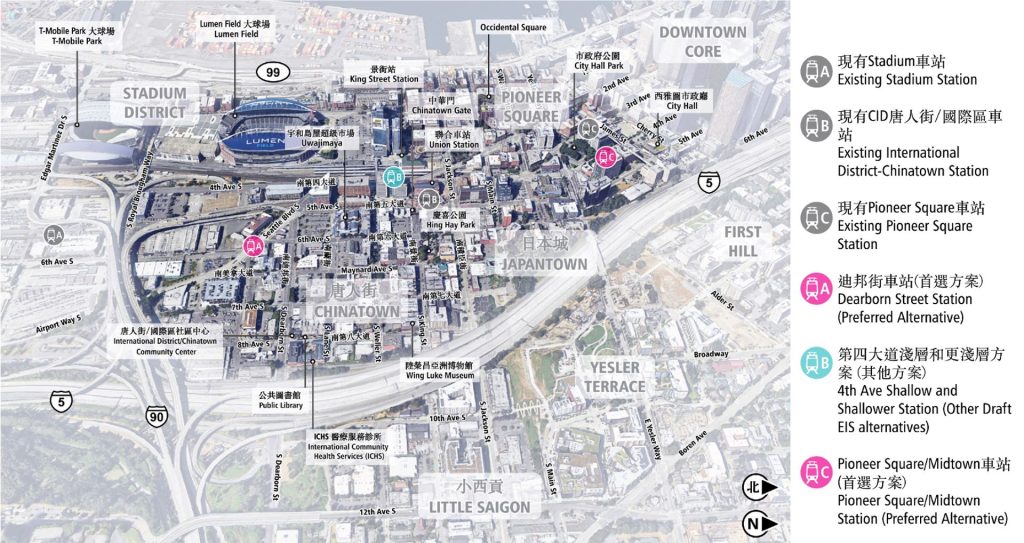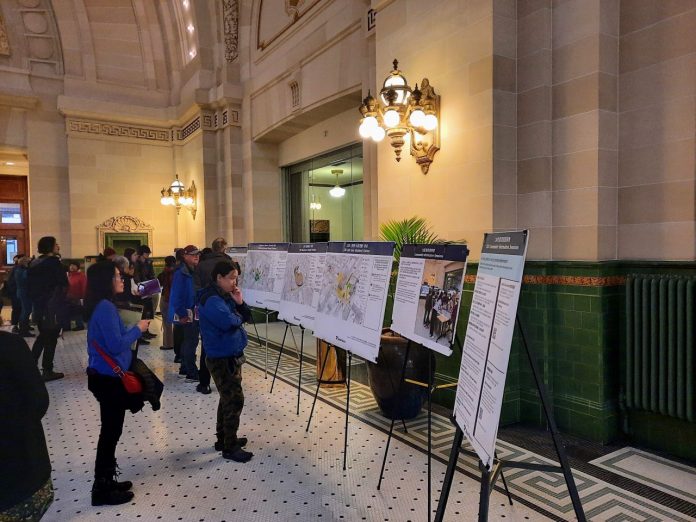
On Wednesday, Sound Transit hosted an outreach event at Union Station aimed at building consensus and easing tensions in the Chinatown-International District (CID) neighborhood. Last year, the Sound Transit Board of Directors opted to add a last-minute option to skip Chinatown with its planned new downtown light rail line and quickly made it the preferred option in the agency’s ongoing study.
While some neighbors celebrated not having another light rail station and the construction impacts it would bring, others pushed back and continued to lobby for a station under Fourth Avenue. That location was also backed by Seattle Subway and The Urbanist since it would place it right between the existing light rail station along Fifth Avenue and King Street Station, allowing quick, easy transfers. The decision has sharply divided the CID community.
Wednesday’s event, which is part of a series and online engagement hub, explored how Sound Transit could create a high-quality transit hub in Chinatown even without adding a new station there. A consultant hired by Sound Transit gave an introductory presentation before breaking attendees into small groups to discuss improvements they’d like to see to the neighborhood. She cited the variety of large construction projects on deck in the area.
“If we align [these projects], we can serve community, connect neighborhoods, and support the culture and the character of Chinatown, International District and Pioneer Square,” the consultant said. “So how do we get to a plan? This is a process, and it’s an iterative process back and forth with community and agencies, and soon with workshops to develop and evaluate and move forward ideas with you. Our goal is that the end of this to have an implementable plan that it has actions and designs for the transportation and public spaces, but with tangible benefits to community guided by the voice of the community.”
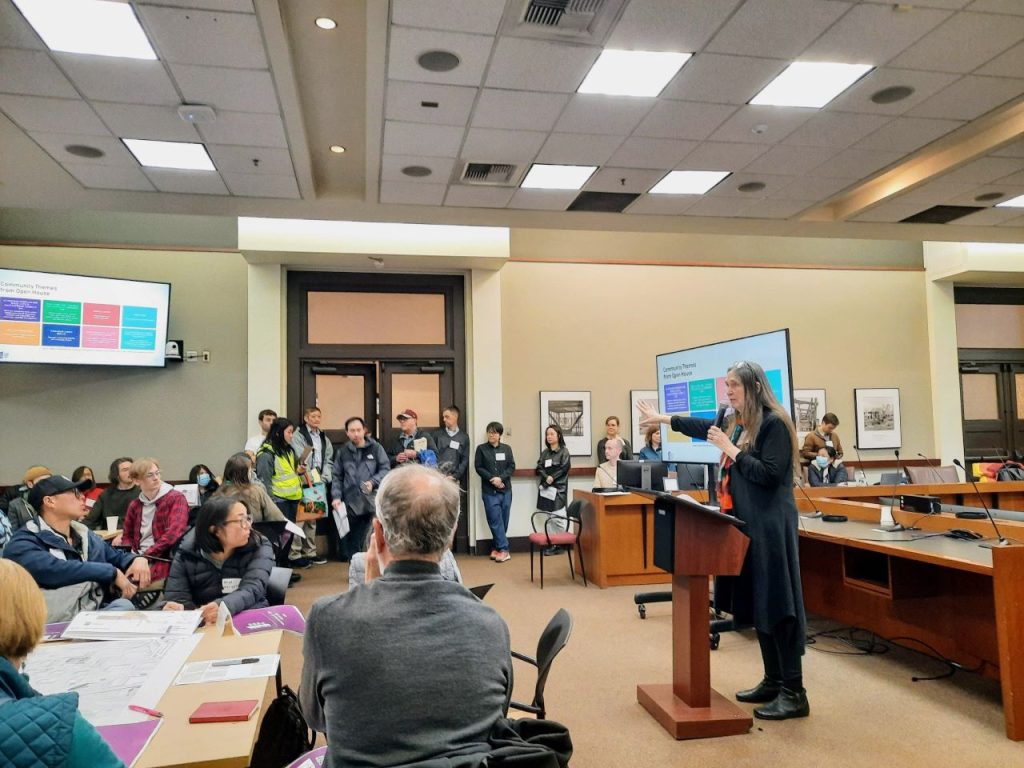
The timeline to make such decisions and for the subsequent investments to come online remains vague. The new light rail stations would be delivered as part of Ballard Link, an expansion project bringing 10 new stations in all and now slated to open in 2039 — four years later than initially pledged — due to a series of planning delays.

Sound Transit sought to distance the station decision from the South Downtown hub discussion they were hosting. New station names also seemed calculated to blur the difference, with “Midtown (James Street) Station” apparently the agency’s new name for North of CID station in Pioneer Square and “CID (Dearborn Street) Station” the name for the option they’d previously called “South of CID” in SoDo.
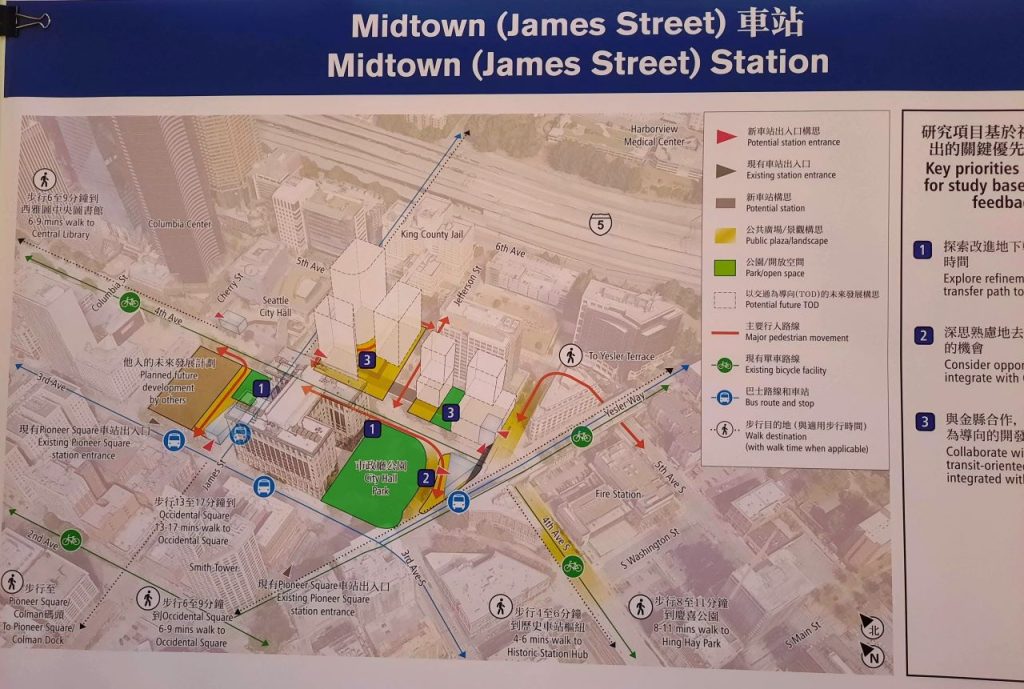
However, obviously the station decision and what actual neighborhood they’re built in will have huge implications for how successful a transit hub can be. The City of Seattle had already completed a “Jackson Street Hub” planning exercise in 2019 that had been built upon Chinatown having the hub light rail station, not to mention a downtown streetcar extension along First Avenue that has also been tabled.
The other looming question is who would pay for the accompanying improvements to create a South Downtown hub, which was not clear or spelled out in the agency’s presentation and handouts.
Brien Chow, a vocal elder in the Chinatown community and an organizer with Transit Equity for All, spoke up during the presentation to argue the Fourth Avenue station option was being sidelined and shortcomings of the agency’s North and South of CID preferred alternative were being papered over.
“To isolate the Chinatown area with the North and South [of CID alternative] by walking into Chinatown — for a mile you have to walk to get into Chinatown. That is not right,” Chow said. “So I need to know where the Fourth Avenue issues are and how you’re going to improve the Fourth Avenue [alternative]. Right now, you’re not showing that.”
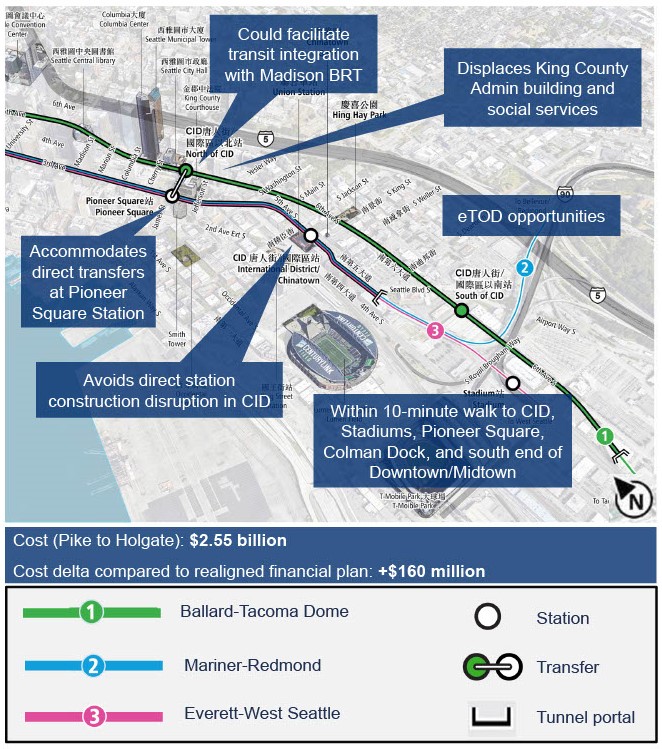
Sound Transit leaders responded by saying that the topic of the event was the South Downtown hub, and that Fourth Avenue had been included in tandem with the preferred alternatives in the materials, and more workshops were planned. Chow and fellow Transit Equity for All leader Betty Lau pushed the agency to hold a workshop specifically on the Fourth Avenue Station, but did not get such assurances.
Putting a station near Seattle City Hall and another near Inscape Arts and Cultural Center, as the North and South option does would involve a roughly 10-minute walk to reach King Street Station and its Amtrak and Sounder commuter rail connections. Transfers within the light rail system would also get more complicated and slow since the CID station had originally planned to be the primary hub for the agency’s network, along with Westlake Station.
Having a hub station in Pioneer Square would also generally involve longer transfers between light rail lines due needing to shoehorn a connecting tunnel along a steep slope while avoiding a BNSF rail tunnel in-between and then adding new circulation to the existing Pioneer Square Station to function as a hub. And under the future network, some riders connecting between East Link (2 Line) and the southern half of the 1 Line would have to backtrack farther to complete their journey than if the transit hub was one station south.
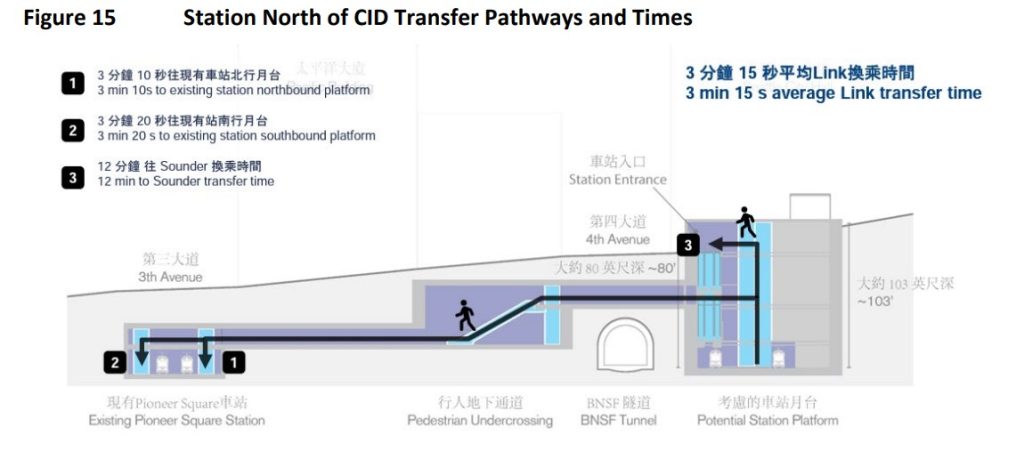
Beyond mobility questions, Sound Transit’s presentation touched on some of the broader planning efforts in the South Downtown area, such as the County’s plans to redevelop its office campus in Pioneer Square with mixed-use highrises and hopes to add a “community-led” affordable housing development on the “S Campus” site near the South of CID station. Acquiring the site could be very costly for Sound Transit and the City of Seattle, given existing permitted plans for an office complex on the site.
In his recent state of the city speech, Seattle Mayor Bruce Harrell teased a broader South Downtown planning effort aiming to align large construction projects and real estate plans in the area. The Sound Transit effort appears to be a part of that “very coordinated targeted growth strategy” Harrell promised, and numerous Seattle Office of Planning and Community Development staff were present at the event, including OPCD Director Rico Quirindongo.
Harrell’s annual speech pledged to build a “new kind of neighborhood” in South Downtown, but some CID leaders did not seem enthused by focusing intense redevelopment and rebrand energy near their borders.
“We don’t need a new neighborhood on the north end,” Chow told the assembly Wednesday.
Doug Trumm is publisher of The Urbanist. An Urbanist writer since 2015, he dreams of pedestrian streets, bus lanes, and a mass-timber building spree to end our housing crisis. He graduated from the Evans School of Public Policy and Governance at the University of Washington in 2019. He lives in Seattle's Fremont neighborhood and loves to explore the city by foot and by bike.


